- Fire Emblem Wyvern Rider - June 23, 2022
- Fire Emblem Assassin - June 8, 2022
- Fire Emblem Wyvern Lord - June 8, 2022
The Paladin is probably my favorite archetype in Western entertainment mediums. A gallant figure clad in shiny armor, often on horseback, riding into battle against the forces of evil. Or just people from an opposing country because that’s how war works, but you get what I mean.
Amongst all the promoted units that have appeared in Fire Emblem in its 30+ years, the Paladin is one of the most recurring. The Fire Emblem community loves discussing which class to be the best in the series, and the Paladin is always near the top of the food chain.
Does the Paladin class deserve to be held in such high esteem? I’m glad you asked. Let’s find out together.
History of the Paladin

The Paladin first appeared in Shadow Dragon & the Blade of Light. The first Paladin in the series is Jagen, one of Fire Emblem’s most iconic characters. The class immediately stood out as one of the few that could use multiple weapon types. It served as the de facto promotion class for the Cavalier, a trend that continues to this day.
In the follow-up Fire Emblem Gaiden, Intelligent Systems experimented with third-tier promotions for the first time. The Paladin class could promote into the Gold Knight. Gaiden also removed most classes’ access to multiple weapon types and made the Paladin a Lance-locked class (The Lance being the primary weapon type for Cavaliers/Paladins). Mystery of the Emblem continued this trend.

Intelligent Systems made a significant change to the gameplay by implementing the weapon triangle system in Genealogy of the Holy War. The system gave units with access to multiple weapon types significant advantages. One of these units was the Paladin, who once again could use Lances and Swords. Genealogy of the Holy War also introduced the Paladin class as a promotion option for Troubadours. Along with Swords and Lances, these female Paladins could also use Staves. The Paladin was again the promotion for Cavaliers and Troubadours in Thracia 776, though female Paladins received a slight nerf. They now could only use Swords and Staves. The male Paladin remained as it was in Genealogy of the Holy War.
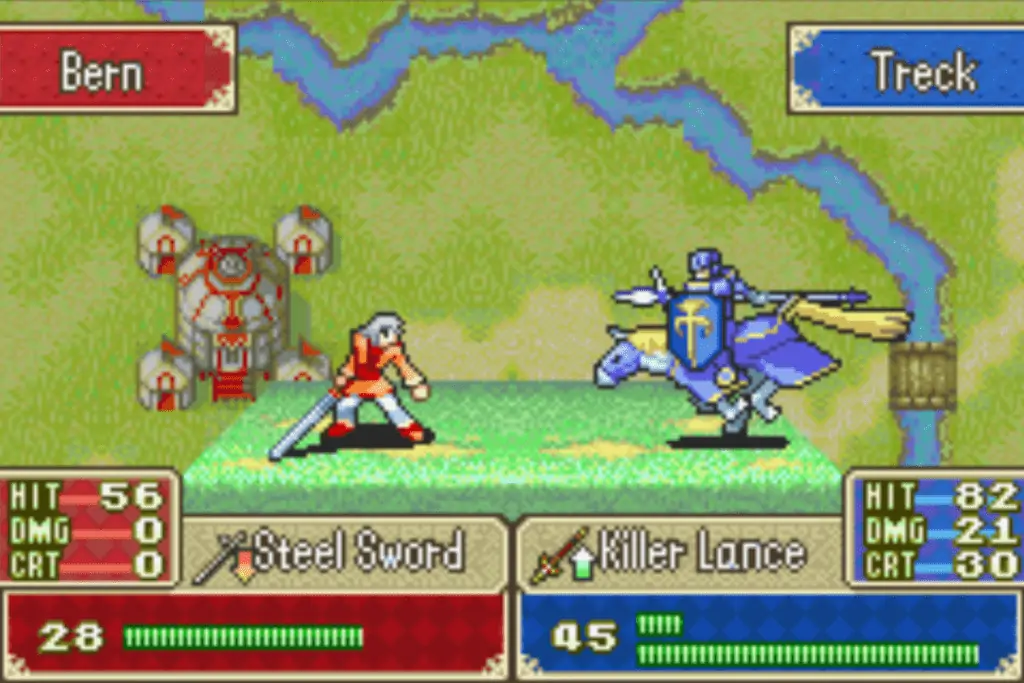
The Paladin class enjoyed its’ period of utmost dominance with the first two GBA Fire Emblem games, The Binding Blade and The Blazing Blade. Paladins could use Swords, Lances, and Axes, giving them complete control over the weapon triangle. Paladins were also no longer the promotion for Troubadours, now replaced with the Valkyrie class. Unsurprisingly, that didn’t last long. In The Sacred Stones, Paladins lost access to Axes and were back to Swords and Lances only (Not that this was the end of the world). If I’m being honest, having access to allow three melee styles made GBA Paladins pretty overpowered.
The Paladin returns in the first game of the Tellius Saga, Path of Radiance, though the classes it promotes from changed. Instead of typical Cavaliers, Path of Radiance has Sword Knights, Lance Knights, Axe Knights, and Bow Knights. All could only use one weapon type, but Paladins have access to 2 of the 4. Radiant Dawn removed the classic Paladin class and divided it based on weapon types, Blade Paladin, Bow Paladin, Lance Paladin, and Axe Paladin. Each could only use one weapon type. Blade Paladins and Axe Paladins could promote into Gold Knights and have access to Swords and Axes, while Lance Paladins and Bow Paladins promote into Silver Knights and use Lances and Bows.
For the rest of the series, the Paladin class has been consistent with its’ functionality pre-Tellius Saga as Sword/Lance using mounted units. In Three Houses, the Paladin is a possible promotion option for Level 20 Commoners or Nobles who pass the Certification Exam and possess a B rank in Lances, Riding, and an Intermediate Seal.
Fire Emblem Paladin
Paladins have a lot going for them, but a bunch of skills isn’t one such thing. And that’s fine since they do okay without them (More than okay).
In total, Paladins have had six skills throughout the series.
Re-Move/Canto
Canto is a skill that is native to every mounted unit. It allows a mounted unit to perform an action, and if they haven’t used up all their Movement, they can move a second time in the same turn.
I find Canto to be the most useful skill in the entire series. I’m one of those players that has to reset a map whenever any unit dies (Even if it’s one I don’t particularly like. I’m looking at you, Dorothy). Canto is the best way of getting your characters out of harm’s way.
Sol
In Path of Radiance, Paladins have access to the Sol skill. When Sol activates, Paladins will regain HP equal to the amount of damage they deal against an enemy.
Defender
Paladins have access to Defender in both Awakening and Fates. It’s a relatively simple skill that gives Paladins a +1 boost to all stats except Movement while they are the active unit in a Pair Up.
Aegis
Aegis is a skill of the Paladin class in Awakening, Fates, and Three Houses. In Awakening, it halves damage taken from Bows, Tomes, and Dragonstones.
In Fates, it halves damage from Bows, Tomes, Dragonstones, Boulders, Shurikens, and Breaths.
Aegis is the mastery skill for the Paladin class in Three Houses and halves damage from magic and bow damage.
Lancefaire
Lancefaire is a passive class skill of Paladins in Three Houses that provides them with +5 Might while wielding a Lance.
Terrain Resistance
Terrain Resistance is another passive class skill of Paladins in Three Houses. It prevents Paladins from taking terrain damage.
What Makes A Paladin?
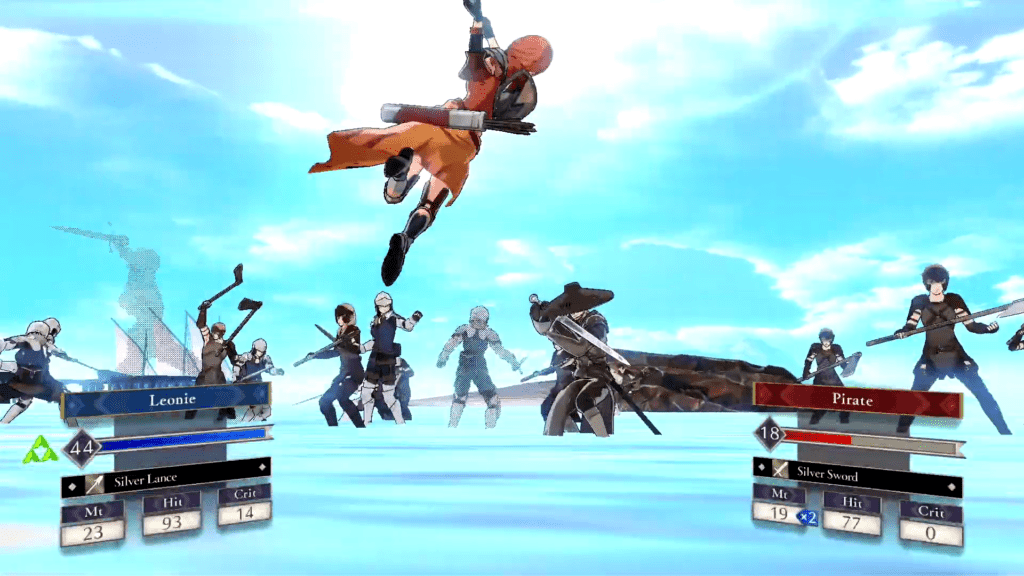
The Paladin is a ramped-up version of the Cavalier in almost every respect.
The performance and stat spread of many pre-promoted Paladins will depend on whether they fit into one of three Paladin archetypes. Yes, Paladins have three, whereas most classes have one.
The first archetype is the Jagen, based on the series’ first Paladin. Most Jagen characters are Paladins (Though not all of them) and will OP early game units. They are capable of one rounding pretty much everyone and will take little to no damage from anyone. These characters are almost always mentors to the game’s main Lord. Their growth rates are pretty typical for pre-promoted units.
In addition to the Jagen, you have the Pure Jagen. Pure Jagen units have near-identical characterization as Jagen units except for their age, as most Pure Jagens are very senior in age. And not the Heihachi Mishima, Master Roshi, or Master Genkai very senior in age, but rather me in 60 years senior in age. Which probably won’t be pretty unless I get my hands on that anti-aging drug from Spider-Man: Edge of time.
Their stats, growth rates, and weapon ranks will be much worse than Jagen units. Pure Jagen units will still have better base stats than your non-promoted units, but some will be in the single digits, and their growth rates can be pretty terrible. They are valuable characters in the early game, but their poor growth rates will cause them to struggle later.
The last pre-promoted Paladin archetype is the Oifey. Based on Oifey from Genealogy of the Holy War, these Paladins tend to be in their early-mid 30s. Their base stats are very high, and unlike most Jagen units, they tend to have respectable or even good growth rates. Because of this, Oifey Paladins are capable of keeping up for the entire game, unlike Jagen Paladins, who typically become outclassed by your non-promoted units eventually. Pre-promoted Paladins that don’t fit any of these archetypes vary in performance. Some are gods, like Perceval, and others range from mediocre to average, like Isadora and Zelot.
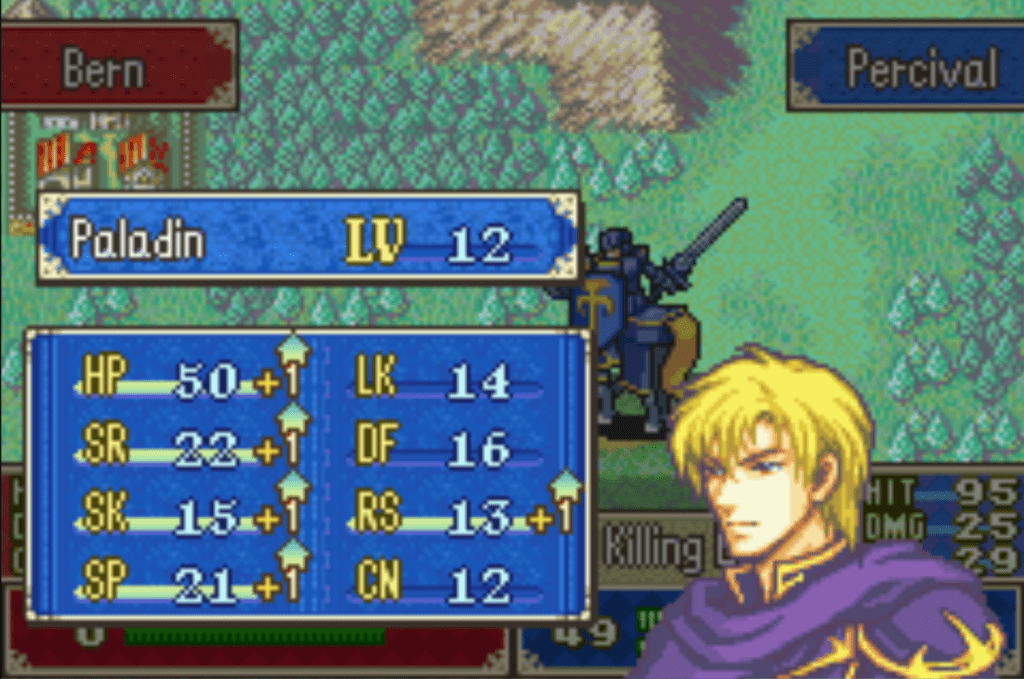
Promoted and pre-promoted units have fairly even stat spreads except for Resistance and sometimes Luck. Strength and accuracy aren’t problems for them. They hit hard and rarely miss and tend to have enough Speed to double all but the fastest enemy types. They can very easily solo entire maps if you want them to. I always have a blast giving one a Killer Lance and seeing them wipe out the whole enemy force. Sometimes I’m so caught up in the slaughter that I carelessly get a backline unit killed, forcing me to reset the glorious campaign, but that’s neither here nor there.
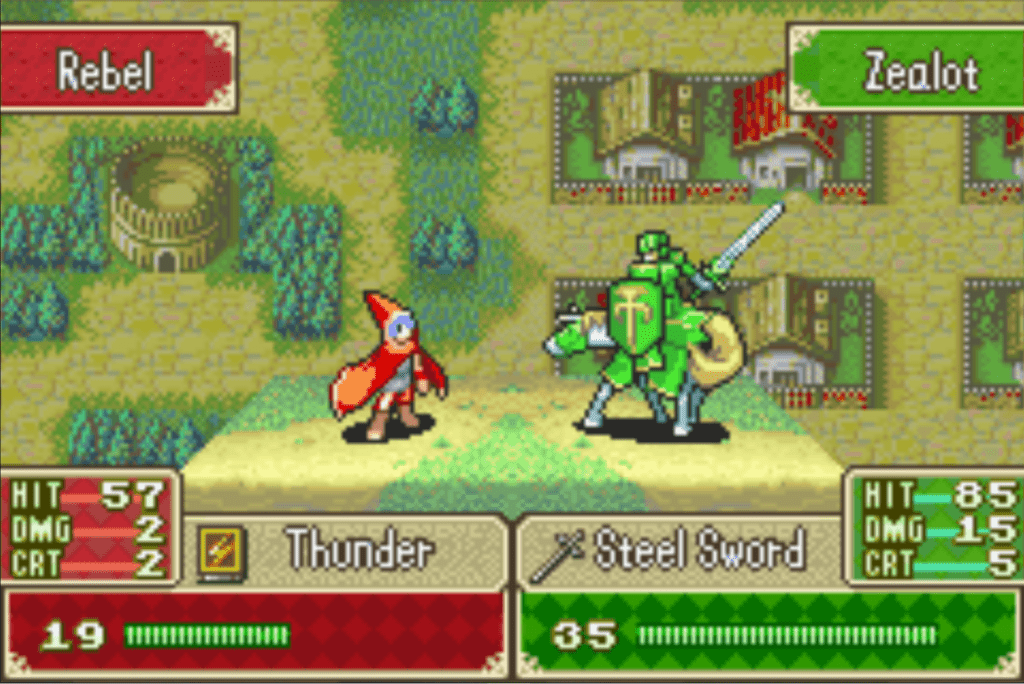
The Paladin is easily at its’ strongest in The Binding Blade and The Blazing Blade due to access to all three melee weapon types. Axes are easily the best weapon promotion gained in these titles due to one weapon: Hand Axes.
Hand Axes are a fantastic 1-2 range weapon, and FE6 and FE7 have a requirement of E rank in Axes. That means Paladins will be able to use them at base. An E rank in Swords or Lances gives you another weapon type, but there is no overly effective Sword or Lance that has E rank requirements. You ideally want at least a C in any weapon type for access to Killer weapons, but with Axes, Hand Axes are enough.
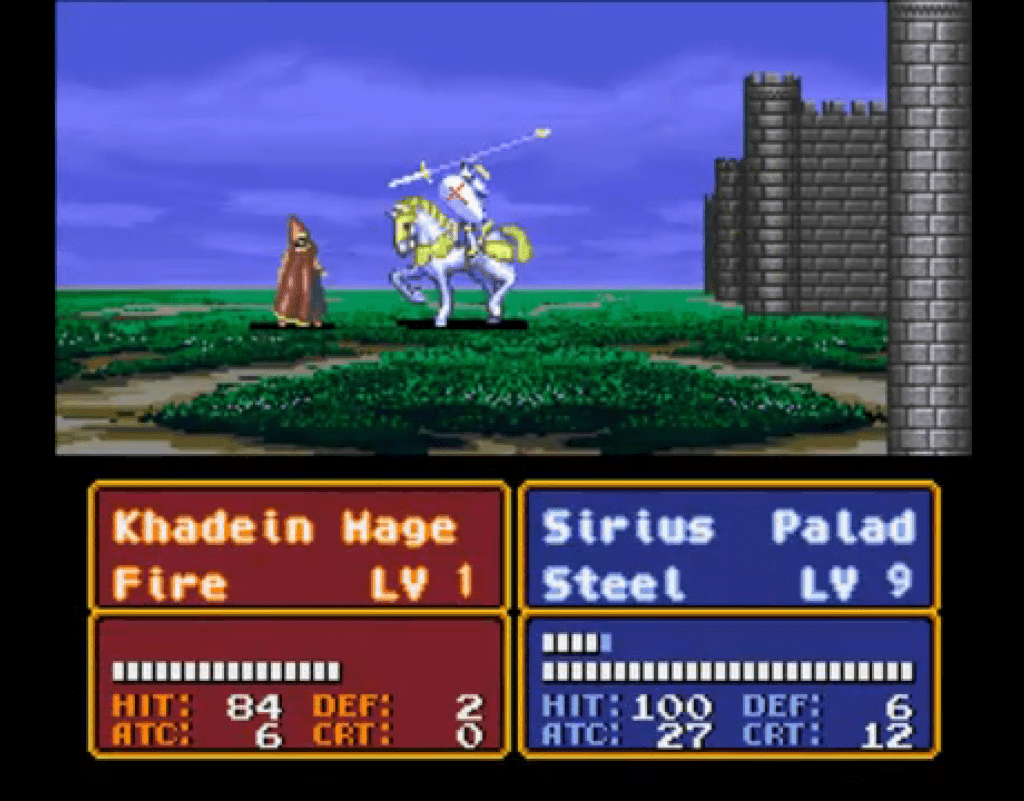
Paladins are arguably the safest physical unit to set out alone. Almost every Paladin has above-average Defense and enough HP to endure multiple hard hits throughout the game (Except for several of the more mediocre pre-promoted ones). They have incredible Movement, with 10 being their peak in the series, and are excellent at completing support objectives like rescuing allies, locking down villages (To prevent brigands from destroying them), and preventing enemy thieves from looting chests.
If you’re not against Arena grinding for gold, I strongly recommend using Paladins. I’ve found that they do well against almost everyone they face, with the possible exception of Swordmasters (Ones that wield Swords stronger than Iron) and occasionally Sages. I try to refrain from using OP pre-promoted Paladins until late in the game, so they’re usually my go-to gold grinders.
Resistance is the primary weakness of the Paladin class (Except in the early game), which can be a problem in the late game against promoted magical enemies. Pre-promoted Paladin units in the first several games in the series have it the worst as they have non-existent growth rates. Your pre-promoted Paladins will regularly have better Resistance stats than your promoted ones because they have a head start. Cavaliers get a solid buff to their Resistance upon promoting to Paladin, but the promotion gain alone isn’t enough for their Resistance to be good. And since their Resistance growth rate is always mediocre, it’s easy for them to be unlucky on level-ups and stay permanently vulnerable to magic attacks. I highly recommend giving them a Pure Water on maps with magical foes.
In Genealogy of the Holy War and Thracia 776, female Paladins will have better Resistance than their male counterparts since they start as the magic-based Troubadour class.
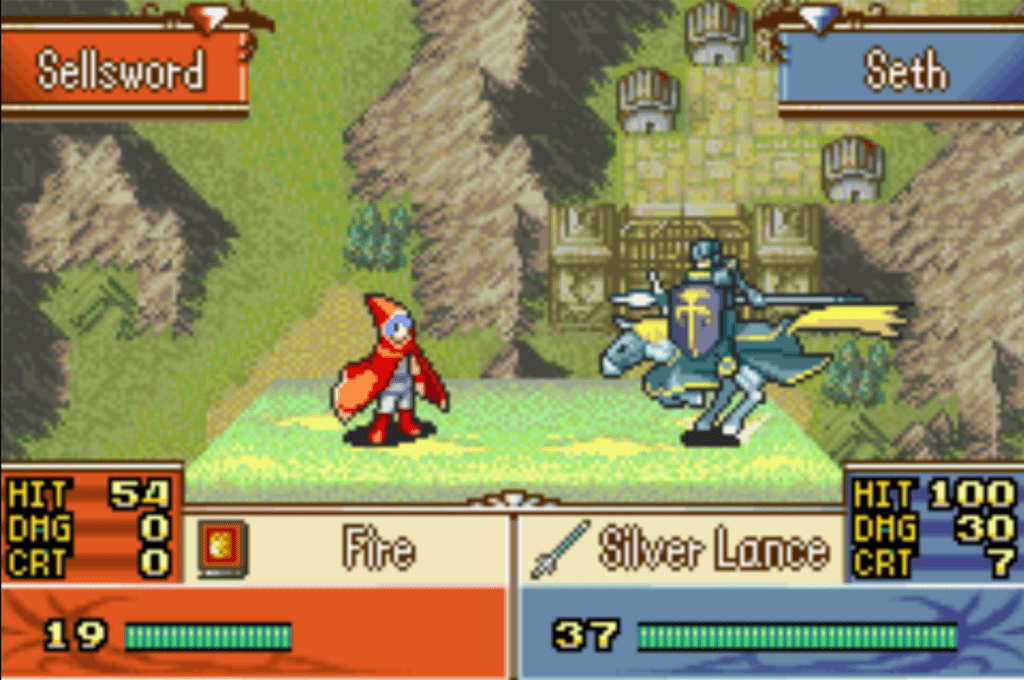
Another weakness of the Paladin class, specifically ones that fall under the three archetypes, is that they’re too strong. You can use them to annihilate all in the early game, but you’ll be screwing over your other units. As is the case with all early game pre-promotes, pre-promoted Paladins gain pitiful amounts of experience when killing enemies in the early game. Doing so too often will cause your other units to be underleveled.
A common strategy to prevent your Paladin from stealing too many kills is having them carry another unit all the time. Doing so will lower their Speed enough to keep them from doubling enemies. It also makes it easier to use them to set up kills for your weaker units.
Like Cavaliers, Paladins need to watch out for weapons supereffective against mounted units like the Horseslayer. Paladins typically have enough HP and Defense to survive a single blow from something like a Horseslayer, but only at full HP.
How Many Playable Paladins Exist In Fire Emblem?
So far, there have been 32 Paladins in the series.
- Jagen (Shadow Dragon & the Blade of Light, Mystery of the Emblem, Shadow Dragon)
- Midia (Shadow Dragon & the Blade of Light, Mystery of the Emblem, Shadow Dragon, New Mystery of the Emblem)
- Arran (Shadow Dragon & the Blade of Light, Mystery of the Emblem, Shadow Dragon, New Mystery of the Emblem)
- Mathilda (Gaiden, Echoes: Shadows of Valentia)
- Sirius (Mystery of the Emblem, New Mystery of the Emblem)
- Abel (Mystery of the Emblem, New Mystery of the Emblem)
- Roshea (Mystery of the Emblem, New Mystery of the Emblem)
- Oifey (Genealogy of the Holy War)
- Fred (Thracia 776)
- Amalda (Thracia 776)
- Conomor (Thracia 776)
- Marcus (The Binding Blade, The Blazing Blade)
- Zelot (The Binding Blade)
- Perceval (The Binding Blade, Awakening)
- Eliwood (Awakening)
- Isadora (The Blazing Blade)
- Seth (The Sacred Stones, Awakening)
- Orson (The Sacred Stones Chapter 5X & Creature Campaign)
- Titania (Path of Radiance)
- Geoffrey (Path of Radiance, Awakening)
- Petrine (Path of Radiance Trial Maps & Awakening)
- Vyland (New Mystery of the Emblem)
- Camus (New Mystery of the Emblem, Awakening)
- Clive (Awakening)
- Sigurd (Awakening)
- Quan (Awakening)
- Finn (Awakening)
- Eldigan (Awakening)
- Xander (Fates: Conquest, Revelation)
- Conrad (Echoes: Shadows of Valentia)
- Randall (Echoes: Shadows of Valentia)
- Dimitri (Three Houses)
Is The Paladin Class Good?
Yes, it is. I would argue that the Paladin class is the best overall class in the series.
Compared to Falcoknights and Dracoknights, the other most common mounted units in the series, Paladins have better Resistance than Dracoknights but worse than Falcoknights. They have the lowest Movement but aren’t weak against Bows either. They also have better availability than both.
You can easily remedy their primary weakness of poor Resistance by using Pure Water, at which point they will be strong across the board. Their high Movement will be invaluable throughout the game, and there are only a few maps in the series that will hamper their mobility. The high Movement and Canto ability mean that even subpar Paladins will always be useful units.
Who Are The Best Paladins In Fire Emblem?
If you’ve read any of my other guides, you’d know I typically only highlight one character per class. But with the Paladin class, picking only one is impossible. Yet another reason why I feel Paladins are the best units in the series.
With that said, here is my quartet of best Paladins in the series.
Marcus
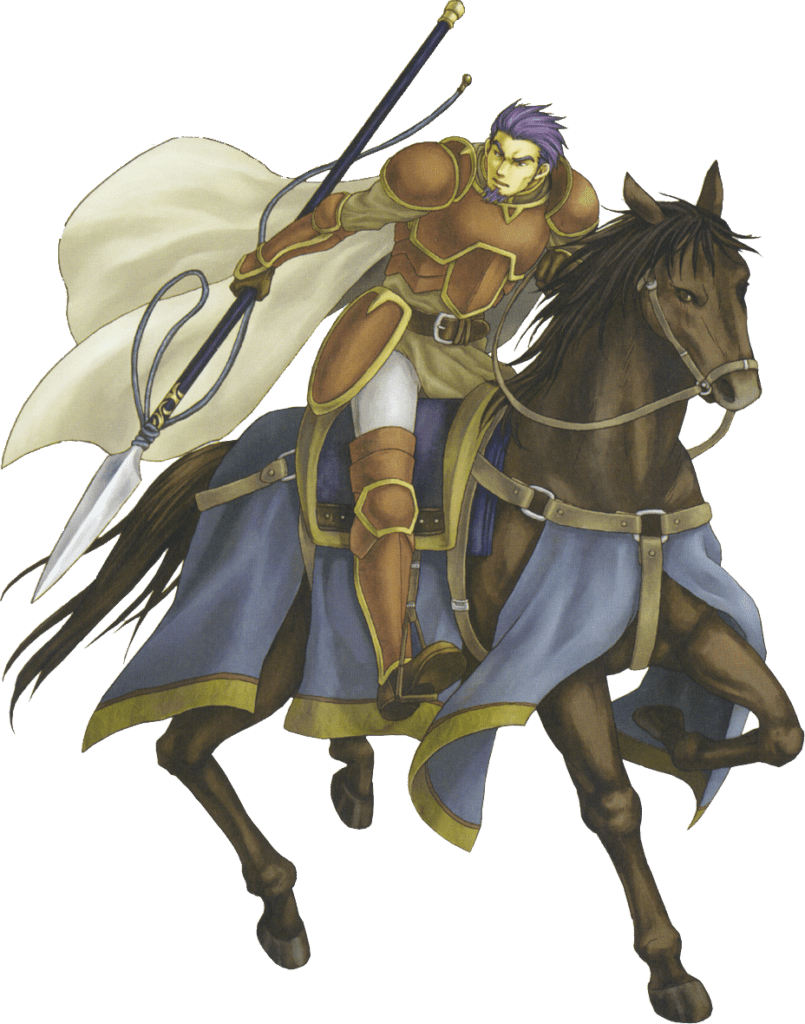
Marcus is easily one of the best units in The Binding Blade and The Blazing Blade.
In The Blazing Blade, Marcus will be one of your strongest characters. He’s got fantastic base weapon ranks, stats, and a surprisingly high Resistance growth rate for a pre-promoted Paladin. Someone like Sain will likely surpass him, but that doesn’t change the fact that Marcus is a dominant unit for the entire game.
In The Binding Blade, Marcus falls off significantly as a Pure Jagen Paladin. However, if you’re attempting to play The Binding Blade on Hard Mode, you’ll quickly realize that the game is borderline impossible to beat without using Marcus in the early game.
Perceval
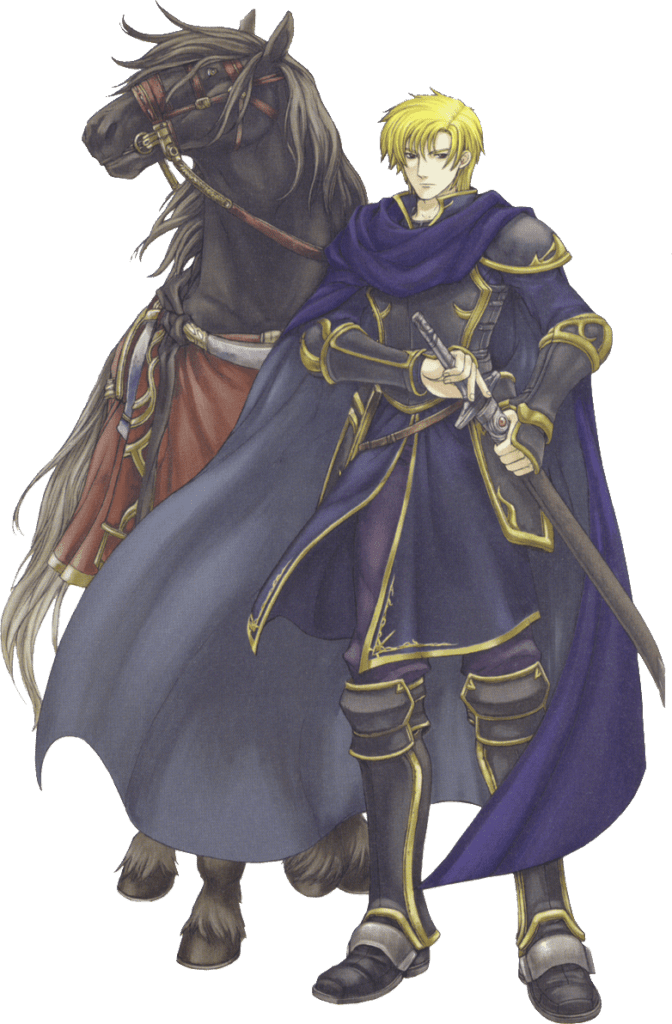
Perceval is a God of Destruction on the level of Beerus himself. He has very strong base stats (Especially with his Hard Mode bonuses) and weapon ranks. Perceval will quickly attain the weapon ranks necessary to use legendary Swords and Lances and can use Killer Axes immediately. He will be one of your best units from start to finish, so recruit him as soon as possible.
Titania

Titania is Path of Radiance’s equivalent to FE7 Marcus and easily one of your best units. Interestingly enough, she specializes in Axes, which is rare for a Paladin (And makes sense since she is an Axe Paladin in Radiant Dawn).
Like Marcus, she will be a reliable unit from start to finish with no real flaw. Her 45% Resistance growth rate means she tends to have a Resistance stat on the higher side as far as Paladins go.
Seth
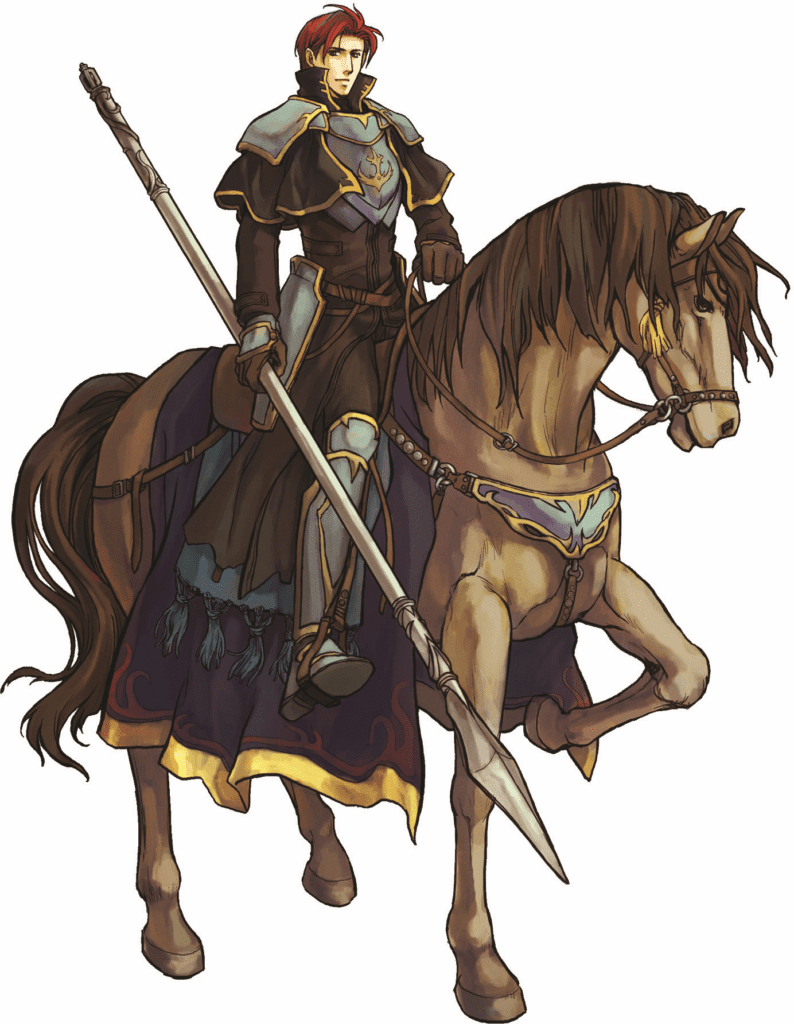
If I could only pick one Paladin, it would be Seth from The Sacred Stones.
He starts with A ranks in Swords and Lances and will easily and quickly cap those out. All his base stats are fantastic, and he has pretty good growth rates outside of Luck.
You can go on YouTube and watch people beat the entire game using only Seth. Not only is he the best unit in The Sacred Stones, or the best Paladin, but one of the best units in the entire series period.
FAQs
Question: Who is your favorite Paladin in the series?
Answer: I am a lifelong Gundam fan and a huge fan of Zechs Merquise, so that makes my favorite Paladin Sirius from Mystery of the Emblem by default.
Question: Is the Great Knight better than the Paladin since it has more weapon options?
Answer: Generally speaking, I believe Paladins are better than Great Knights as Movement is invaluable, and Paladins have Great Knights beat in that regard. They will also be faster than Great Knights.
Question: Who is your least favorite Paladin in the series?
Answer: I would say Isadora from The Blazing Blade. She joins fairly late as a level 1 Paladin and has a base HP stat lower than that of trained Cavaliers. I usually can’t be bothered training her.
Conclusion
I have almost nothing but good things to say about the Paladin class. In Shadow Dragon, where re-classing is an option, I have to resist the urge of re-classing a bunch of units to Cavaliers just so I can run around with a dozen Paladins.
Even as a seasoned veteran of the Fire Emblem series, these games still can give me a hard time. And nothing eases that struggle more than a go-to Paladin or three.
For more interesting readings about Fire Emblem check out:


